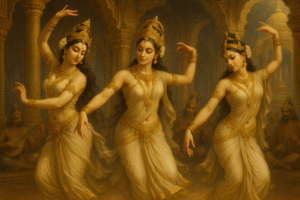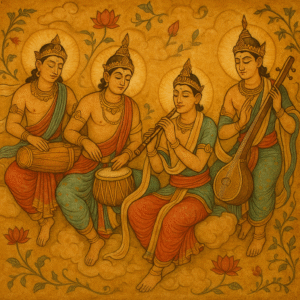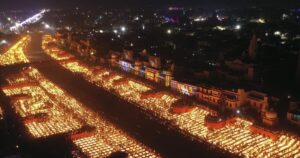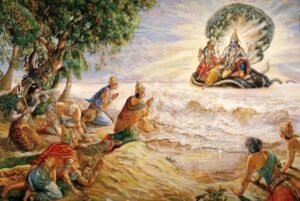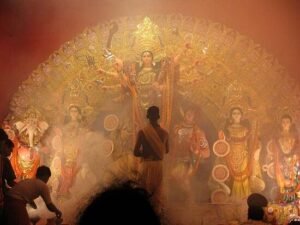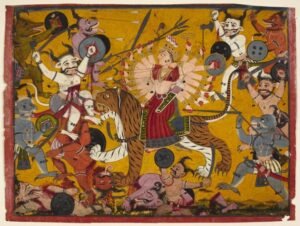Kartikeya, known by various names like Murugan, Skanda, Subrahmanya, and Shanmukha, is a prominent deity in Hindu mythology. Often depicted as a youthful warrior, he is the god of war and the commander-in-chief of the celestial army. Kartikeya is revered for his bravery, wisdom, and unyielding dedication to righteousness, making him an enduring figure in Hinduism, especially in South India, where he is worshipped as Murugan.
The Mythological Birth of Kartikeya
The story of Kartikeya’s birth is deeply rooted in Hindu cosmology and the eternal battle between good and evil. According to legend, the demon Tarakasura gained immense power through a boon that made him invincible to anyone except the offspring of Lord Shiva. This presented a problem, as Shiva was immersed in meditation and detached from worldly concerns.
The gods, led by Brahma and Vishnu, sought the help of Shiva’s consort, Parvati, to bring about Kartikeya’s birth. Shiva’s divine energy manifested as six sparks of fire, which were carried by the Ganga river to the Saravana forest. There, the sparks transformed into six divine infants, each cared for by celestial nymphs known as the Kritikas. Parvati later united the six children into one being with six faces, symbolizing his omniscience and ability to see in all directions.
Kartikeya grew up quickly, embodying extraordinary strength and wisdom. When the time came, he was appointed as the commander of the Devas’ army and led them to victory over Tarakasura, restoring balance to the universe.
Symbolism and Iconography
Kartikeya’s representation in Hindu art and mythology is rich with symbolic meaning.
- The Vel (Spear): Kartikeya’s iconic weapon is the vel, a spear gifted to him by his mother, Parvati. It symbolizes divine power, wisdom, and the destruction of ignorance.
- The Peacock Mount (Paravani): Kartikeya rides a peacock, which represents the victory of knowledge and virtue over pride and ego. The peacock often tramples a serpent, signifying the suppression of base instincts.
- Six Faces (Shanmukha): His six faces reflect his omniscient nature, allowing him to perceive events in all directions. They also signify his six divine attributes: courage, wisdom, strength, love, compassion, and skill.
- Youthful Appearance: Kartikeya is often depicted as a handsome young man, symbolizing vitality, purity, and eternal youth.
These elements come together to portray Kartikeya as a god of both war and wisdom, a protector of dharma (righteousness), and a spiritual guide.
Kartikeya in Hindu Culture
Kartikeya’s worship is widespread, but his following is especially strong in South India, Sri Lanka, and parts of Southeast Asia. In Tamil Nadu, he is revered as Murugan, the patron deity of the Tamil people. He holds a unique place in Tamil culture, art, and literature, with numerous hymns, songs, and poems dedicated to him.
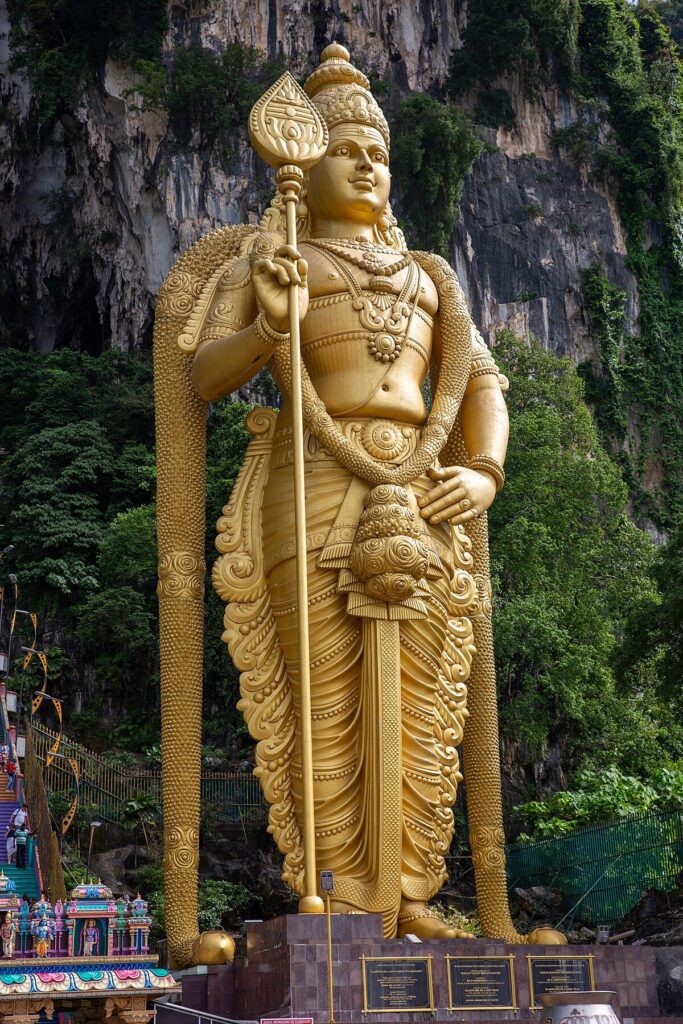
One of the most renowned collections of devotional hymns is the Tiruppugazh, written by the Tamil saint Arunagirinathar. These hymns celebrate Kartikeya’s virtues, his role as a protector, and his ability to guide devotees toward spiritual enlightenment.
Kartikeya is also venerated in North India, where he is associated with festivals such as Skanda Sashti, a six-day event that commemorates his victory over the demon Surapadman.
Sacred Shrines of Kartikeya
Kartikeya is worshipped in numerous temples across India, but the six most sacred shrines, known as the Aarupadai Veedu, hold special significance. These temples, located in Tamil Nadu, mark key events in Kartikeya’s mythology:
- Palani: This temple symbolizes Kartikeya’s renunciation of worldly desires after a disagreement with his brother, Ganesha.
- Swamimalai: Here, Kartikeya is said to have taught the meaning of the sacred mantra “Om” to his father, Shiva.
- Thiruchendur: Associated with his victory over Surapadman, a demon who terrorized the heavens.
- Tiruttani: A hill temple representing Kartikeya’s role as a peacemaker.
- Pazhamudircholai: Situated in a lush forest, this temple reflects Kartikeya’s wisdom and love for nature.
- Thiruparamkundram: This temple commemorates his divine marriage to Devasena, the daughter of the king of the gods, Indra.
These shrines are major pilgrimage destinations, drawing devotees from around the world who seek Kartikeya’s blessings for courage, wisdom, and success.
Festivals and Devotional Practices
Kartikeya’s festivals are vibrant and devotional, with the most notable being Skanda Sashti, celebrated in both North and South India. The festival involves fasting, prayers, and dramatic reenactments of his victory over the demon Surapadman.
In Tamil Nadu, the Thaipusam festival is another major event dedicated to Kartikeya. Devotees carry symbolic spears (vel) and perform acts of penance and devotion, such as walking over hot coals or carrying kavadis (ornate wooden structures) to his temples.
Daily worship often includes the recitation of hymns like the Kanda Shasti Kavacham, which is believed to protect devotees from negative influences. Special offerings, such as flowers, fruits, and sandalwood paste, are made to Kartikeya, accompanied by prayers for courage, wisdom, and prosperity.
Kartikeya’s stories, temples, and festivals highlight his role as a divine warrior and protector. His legacy is deeply woven into the spiritual and cultural fabric of Hinduism, offering lessons in courage, wisdom, and devotion for those who seek his blessings.

